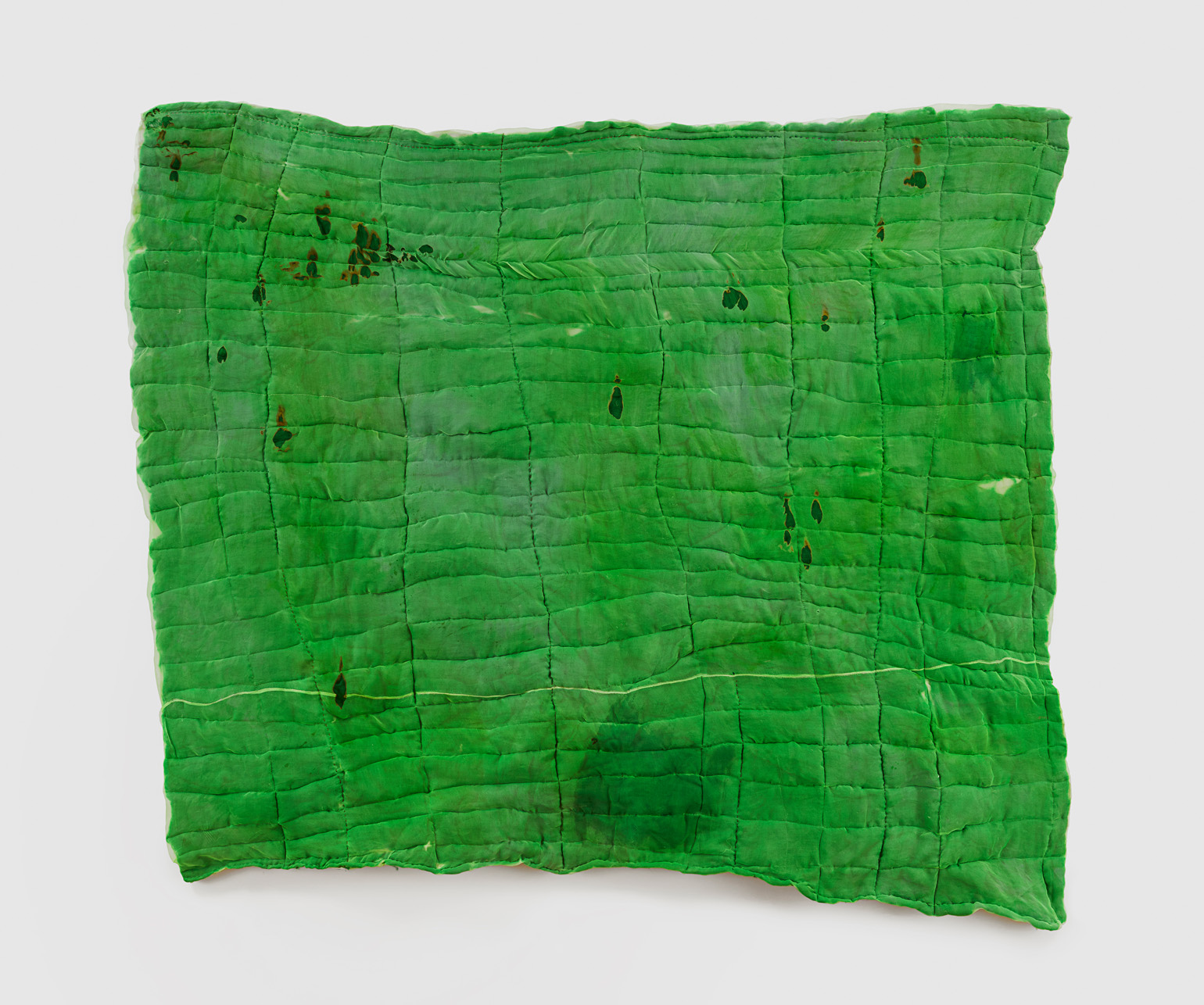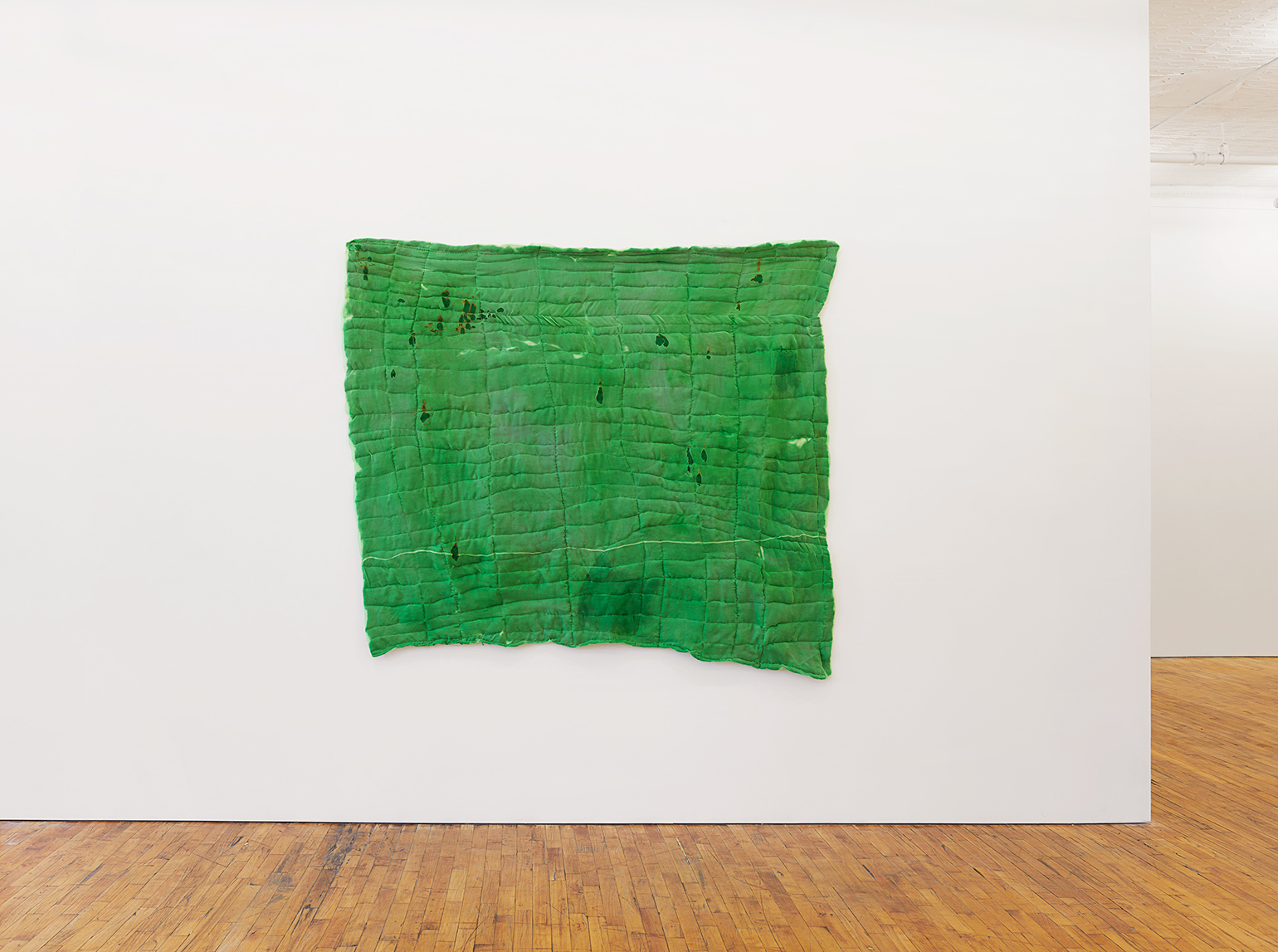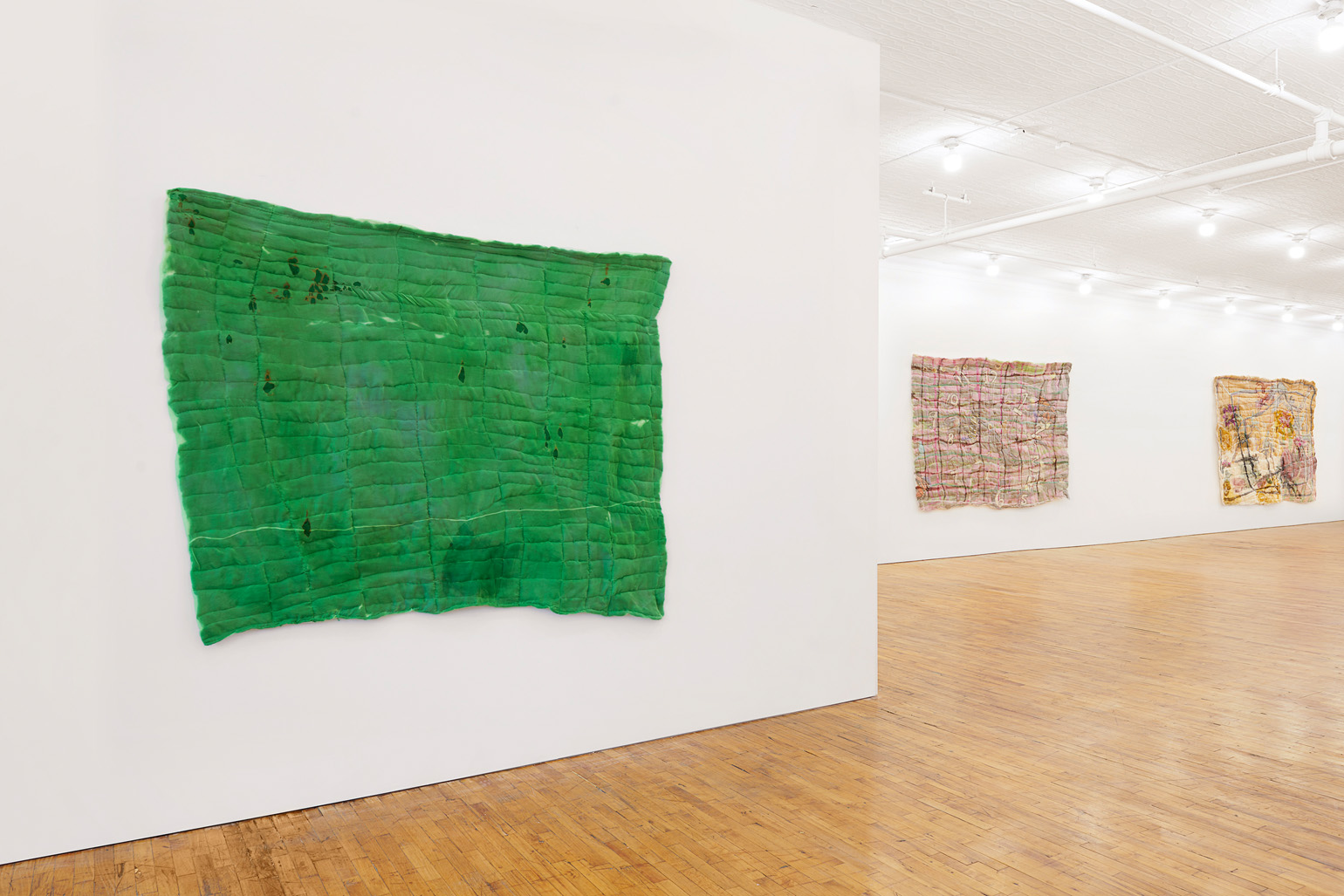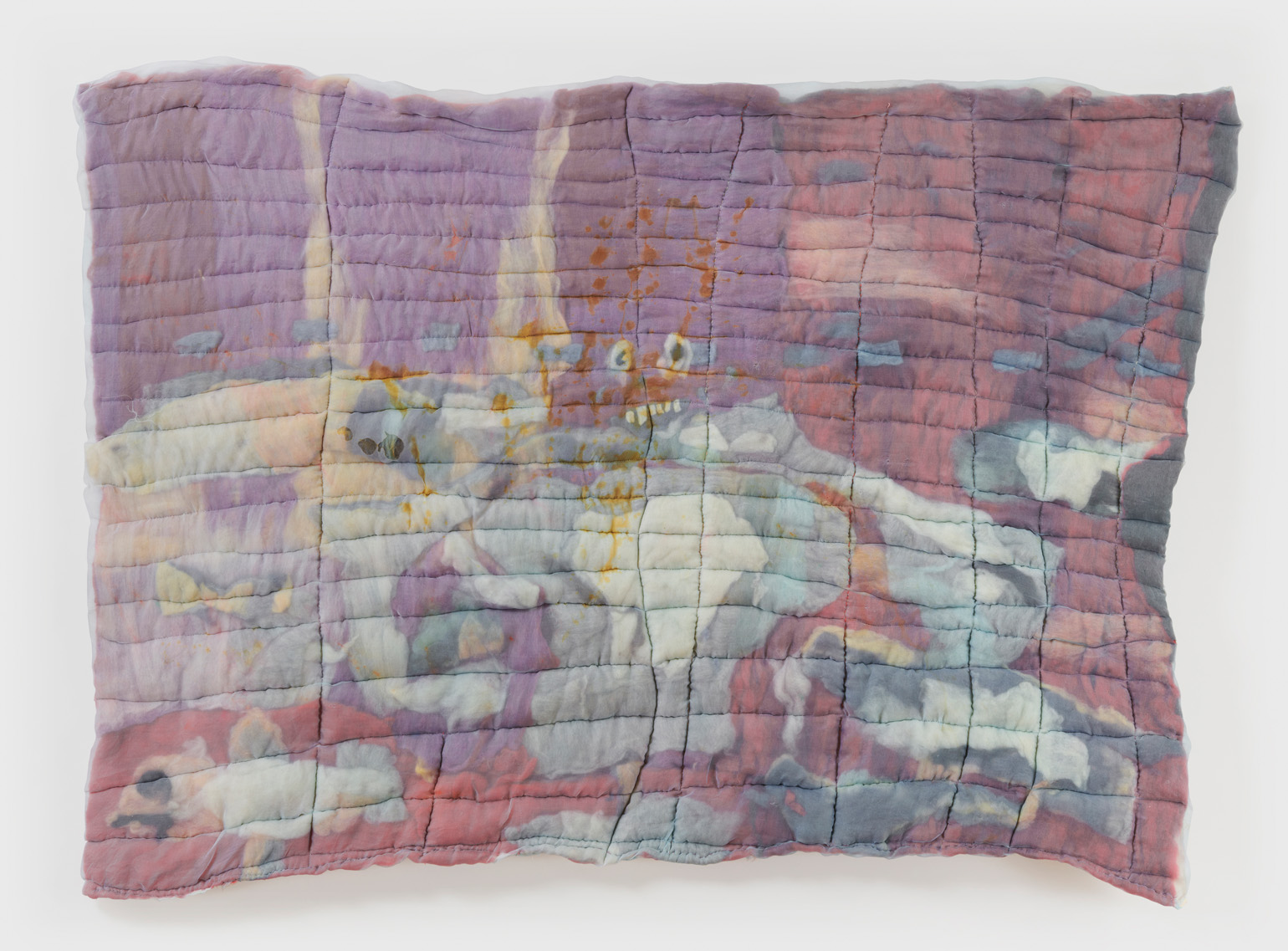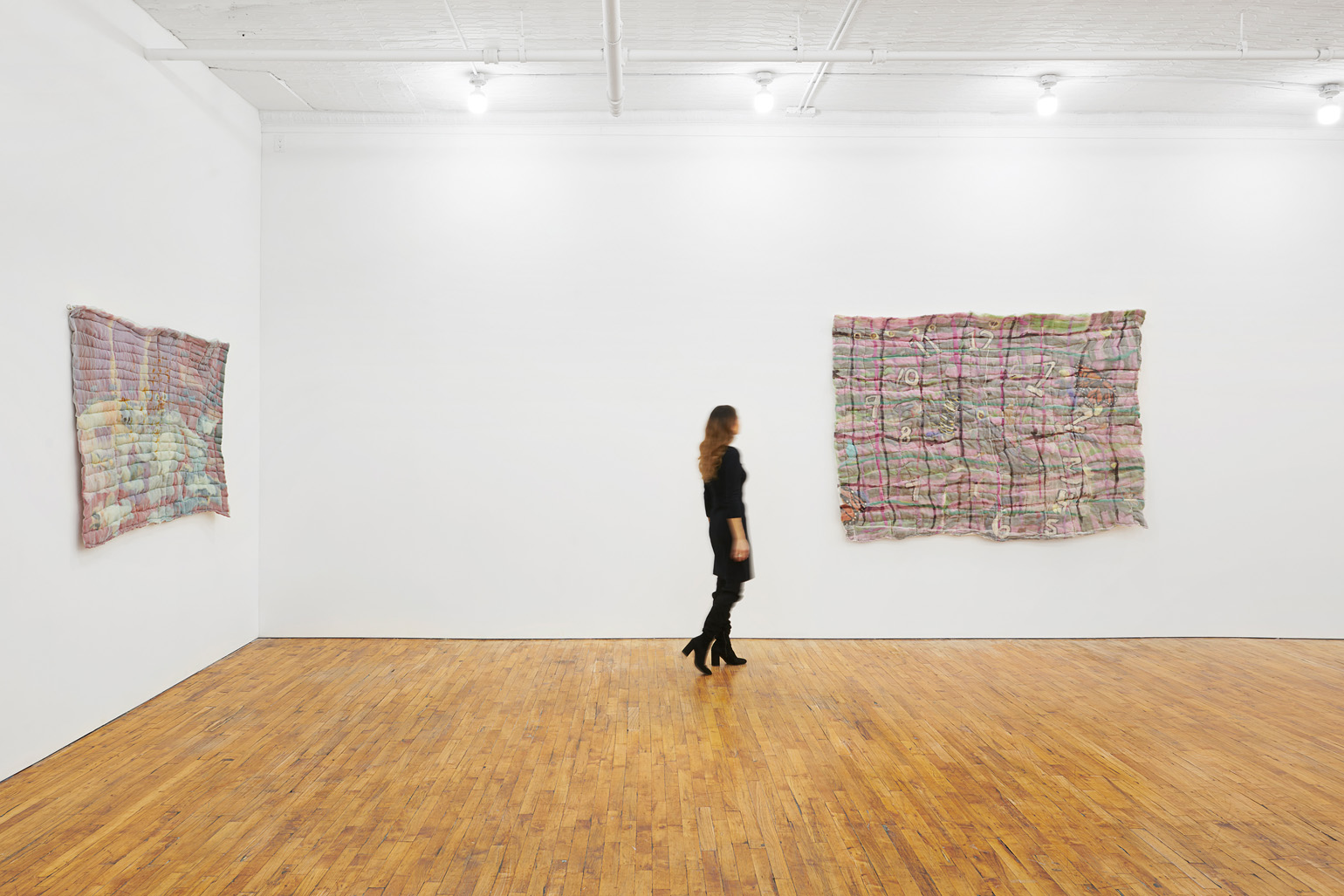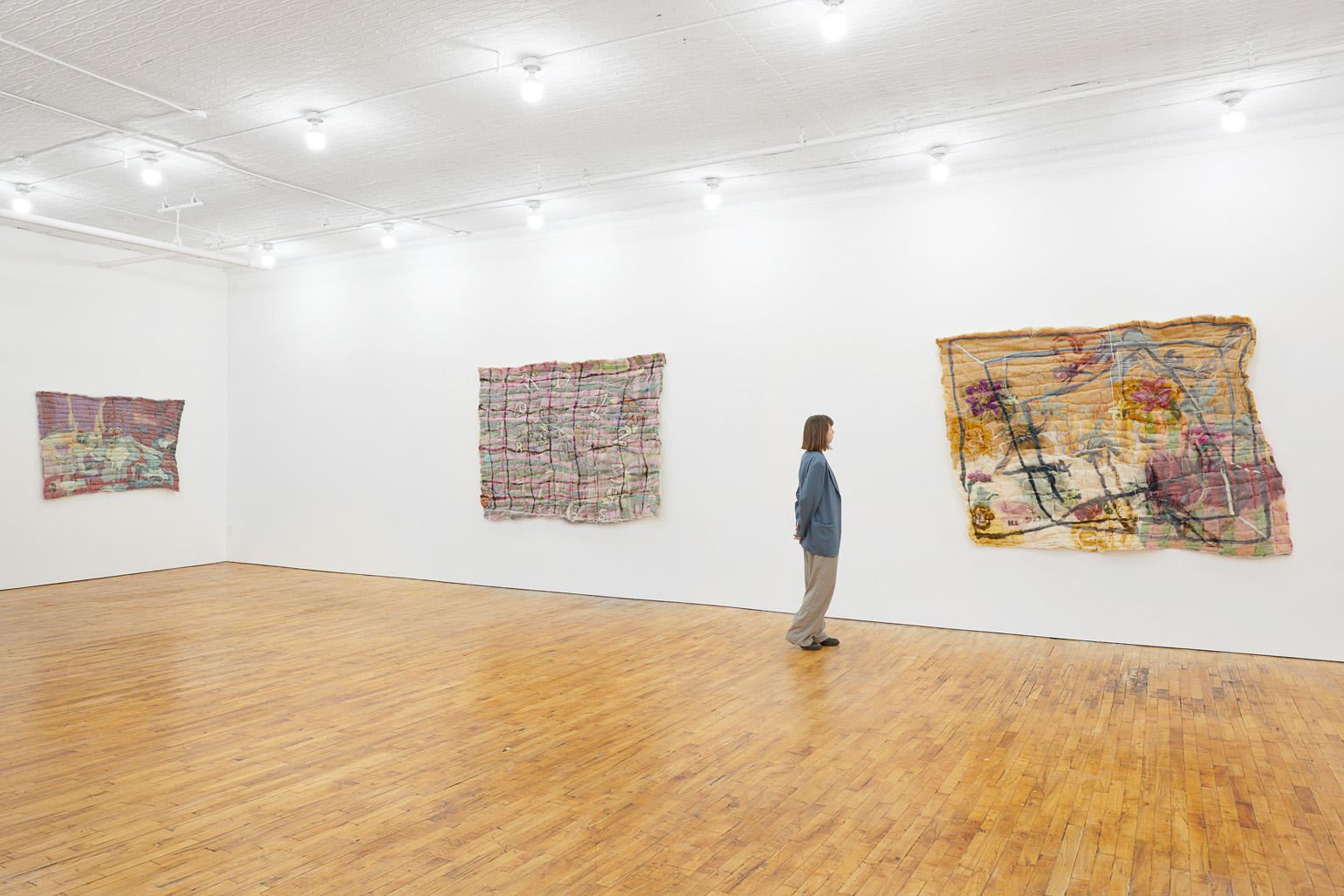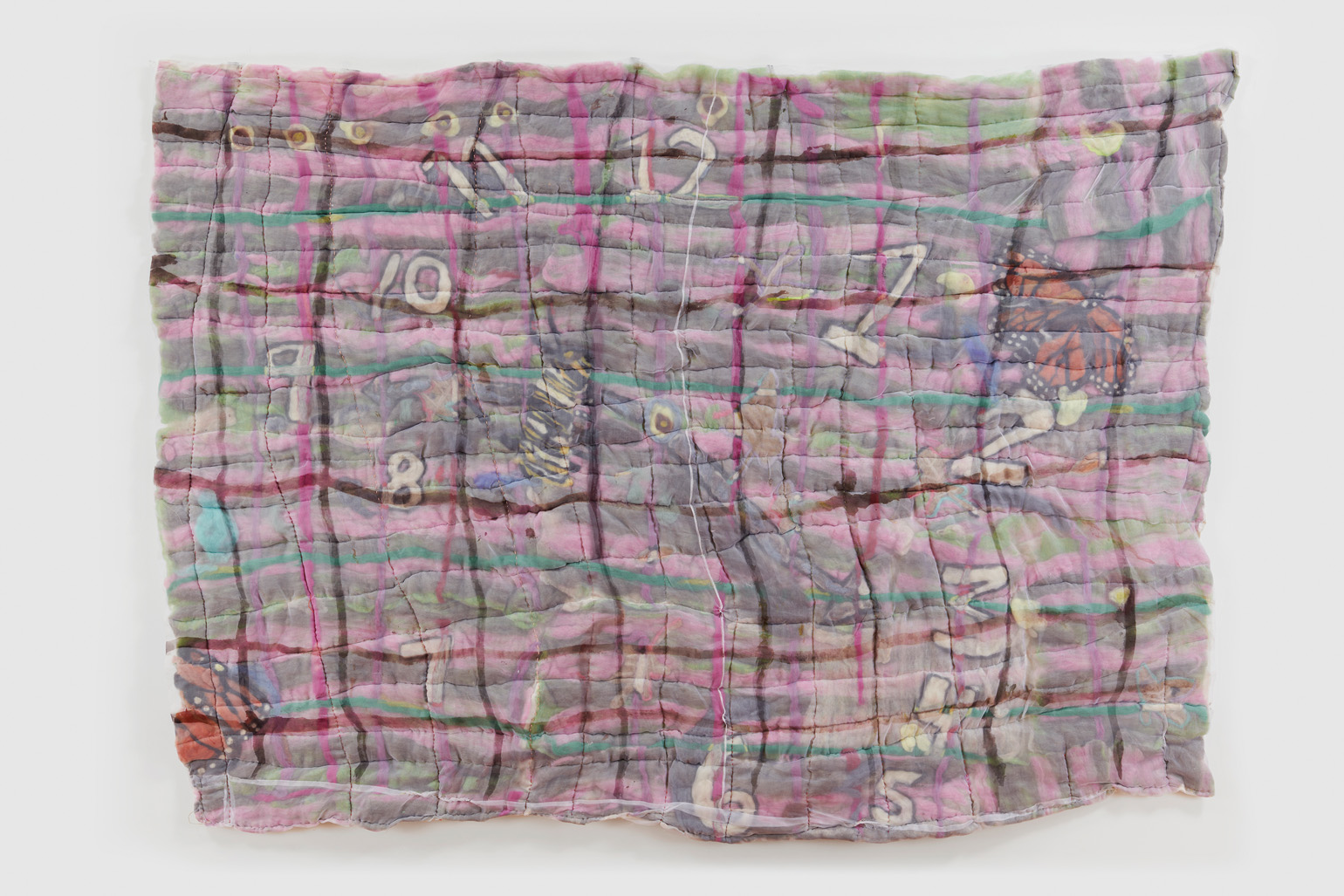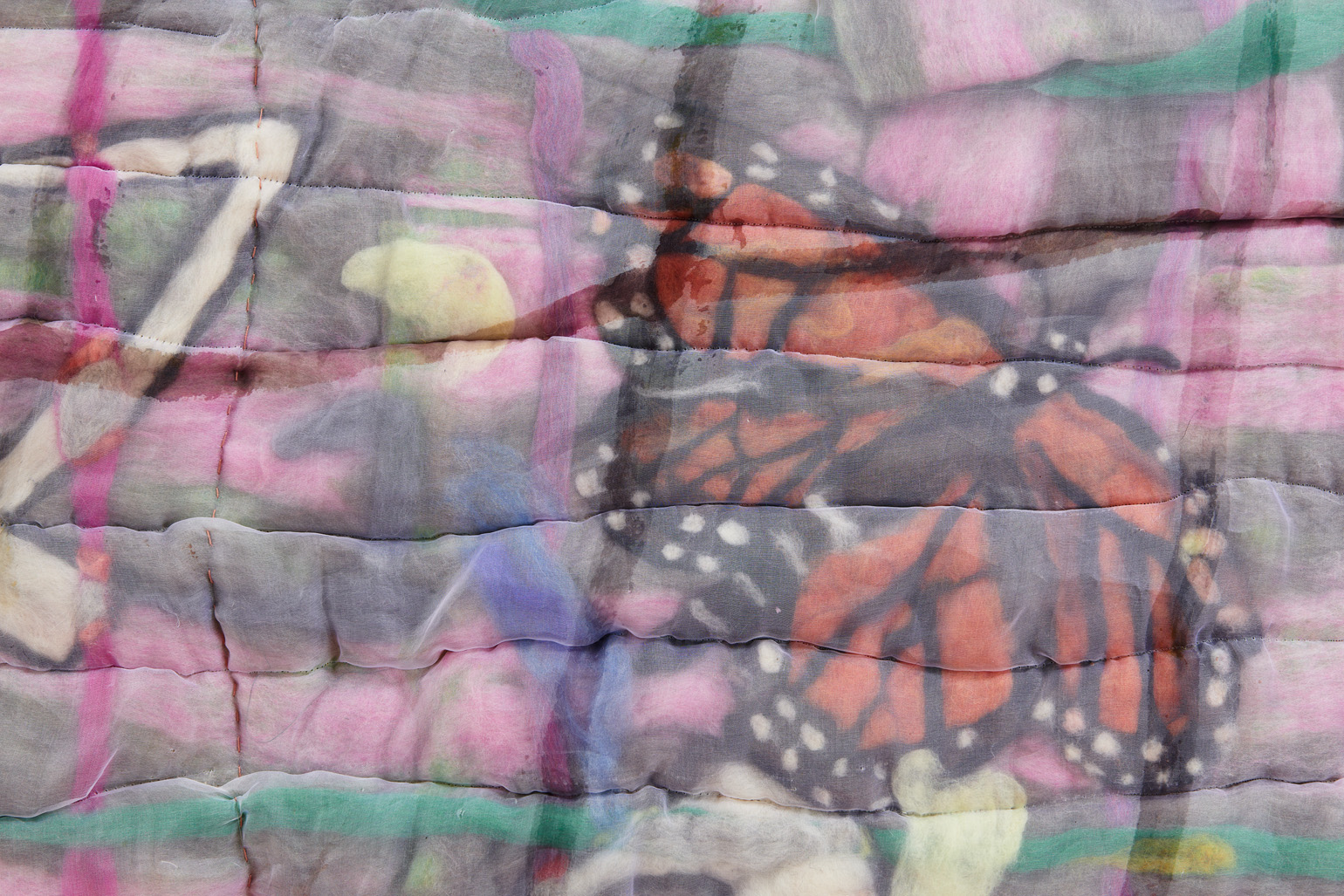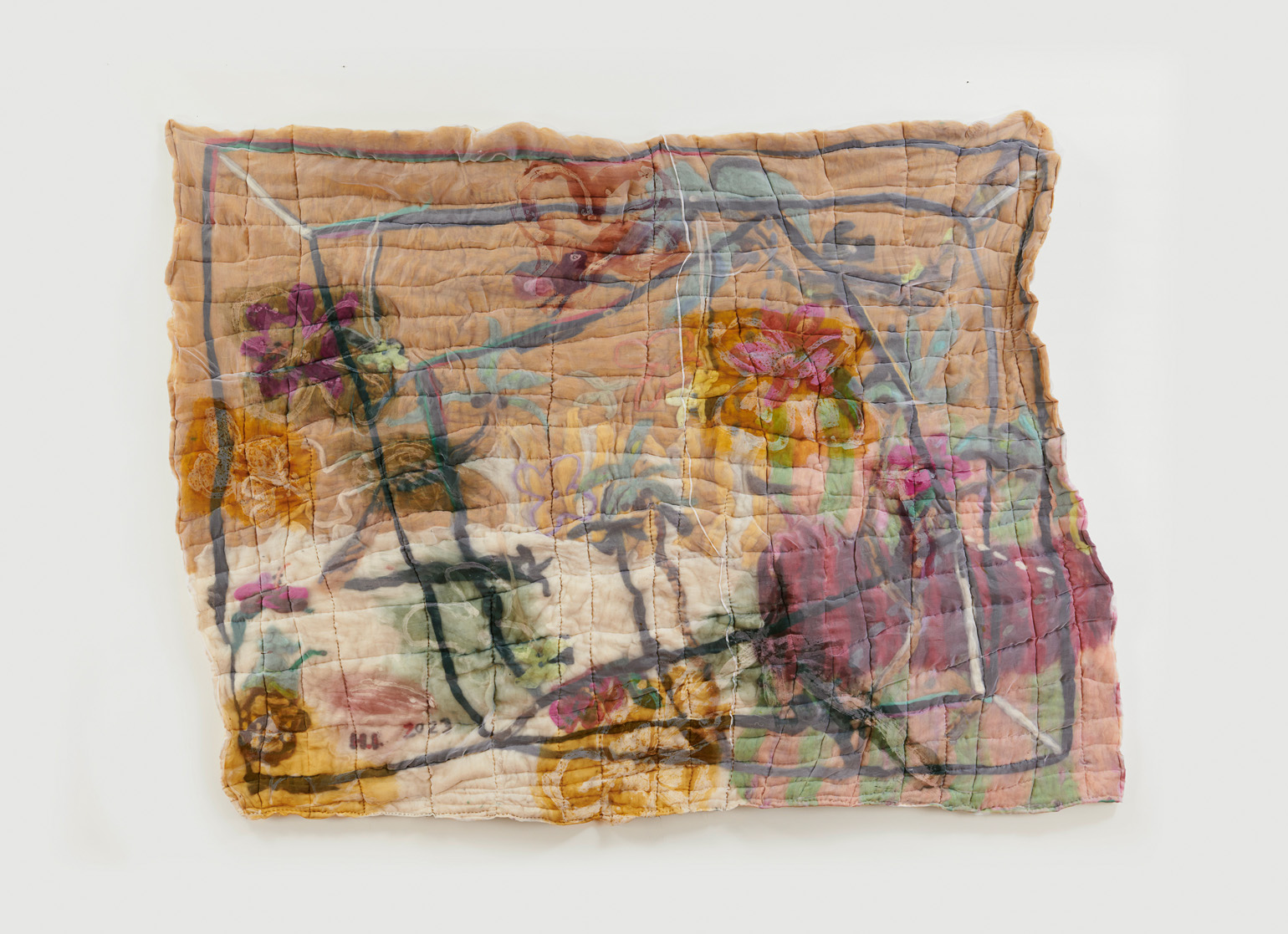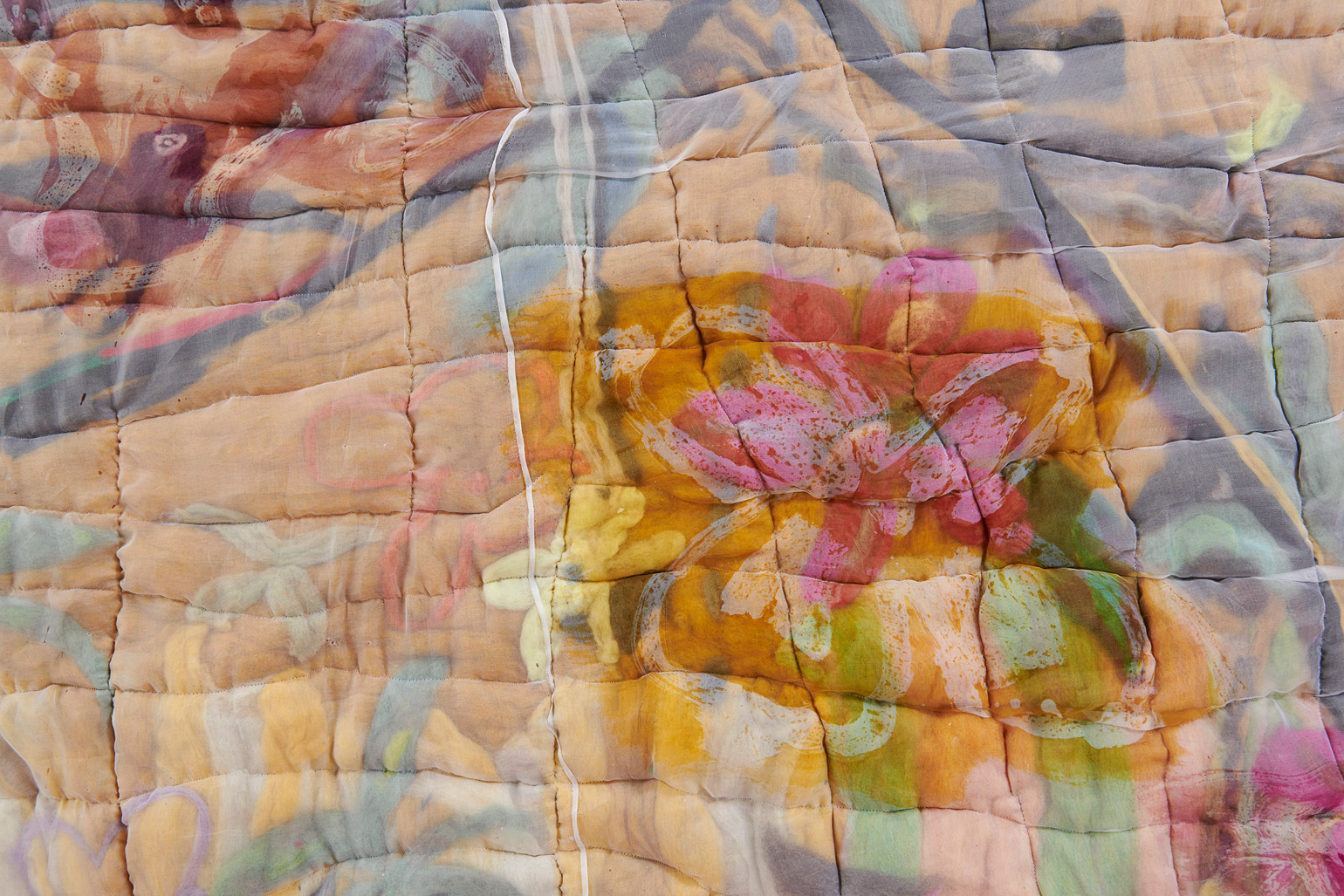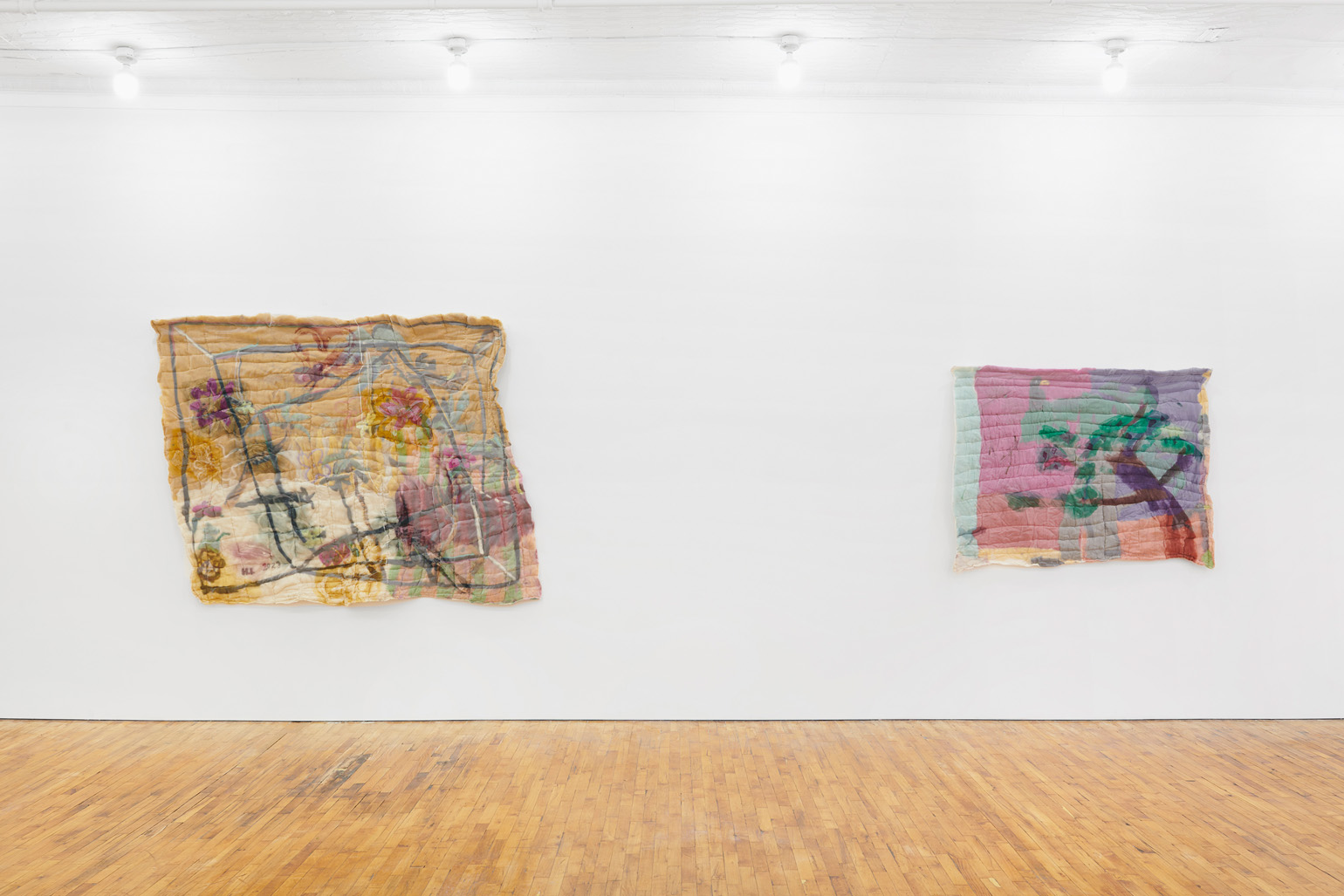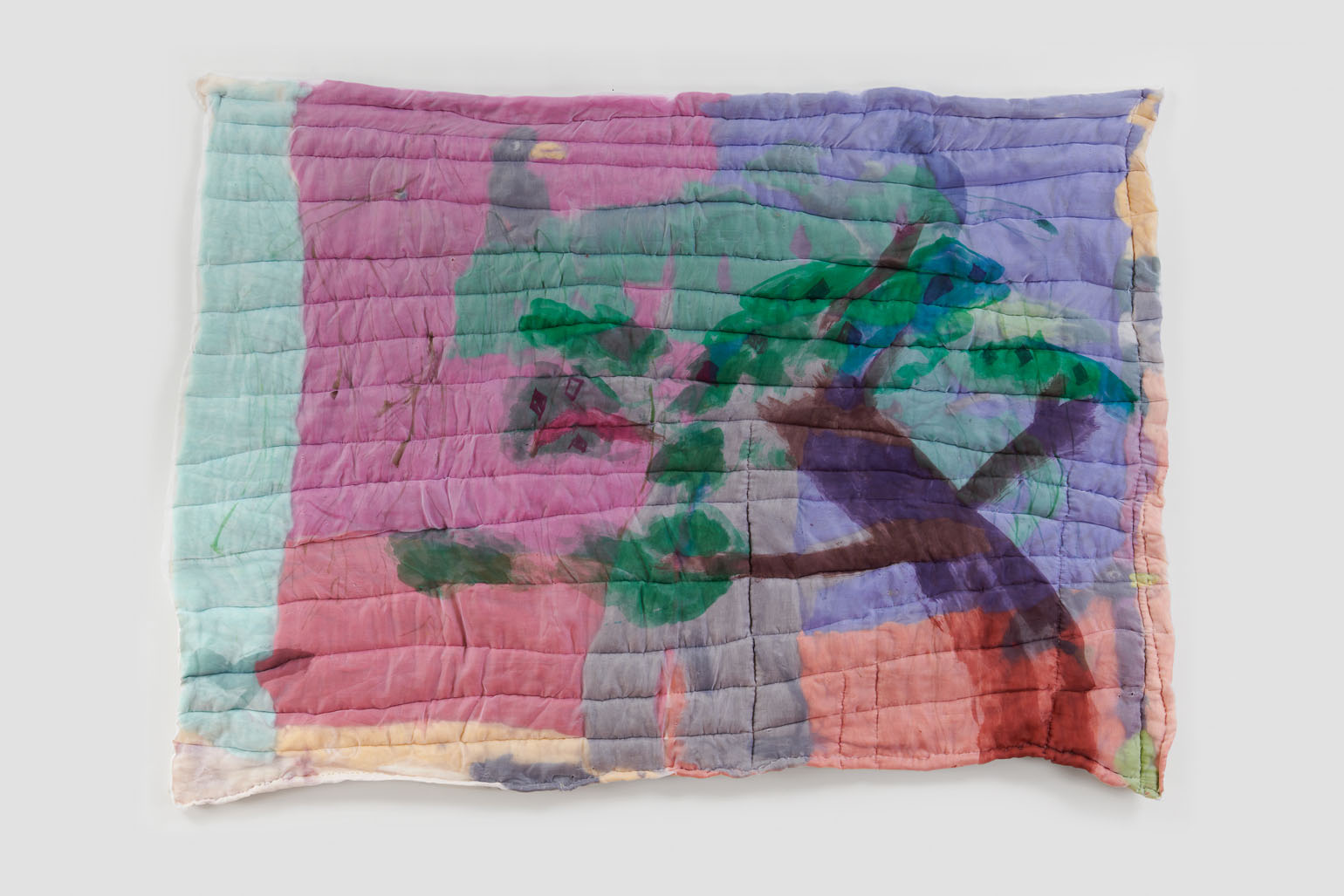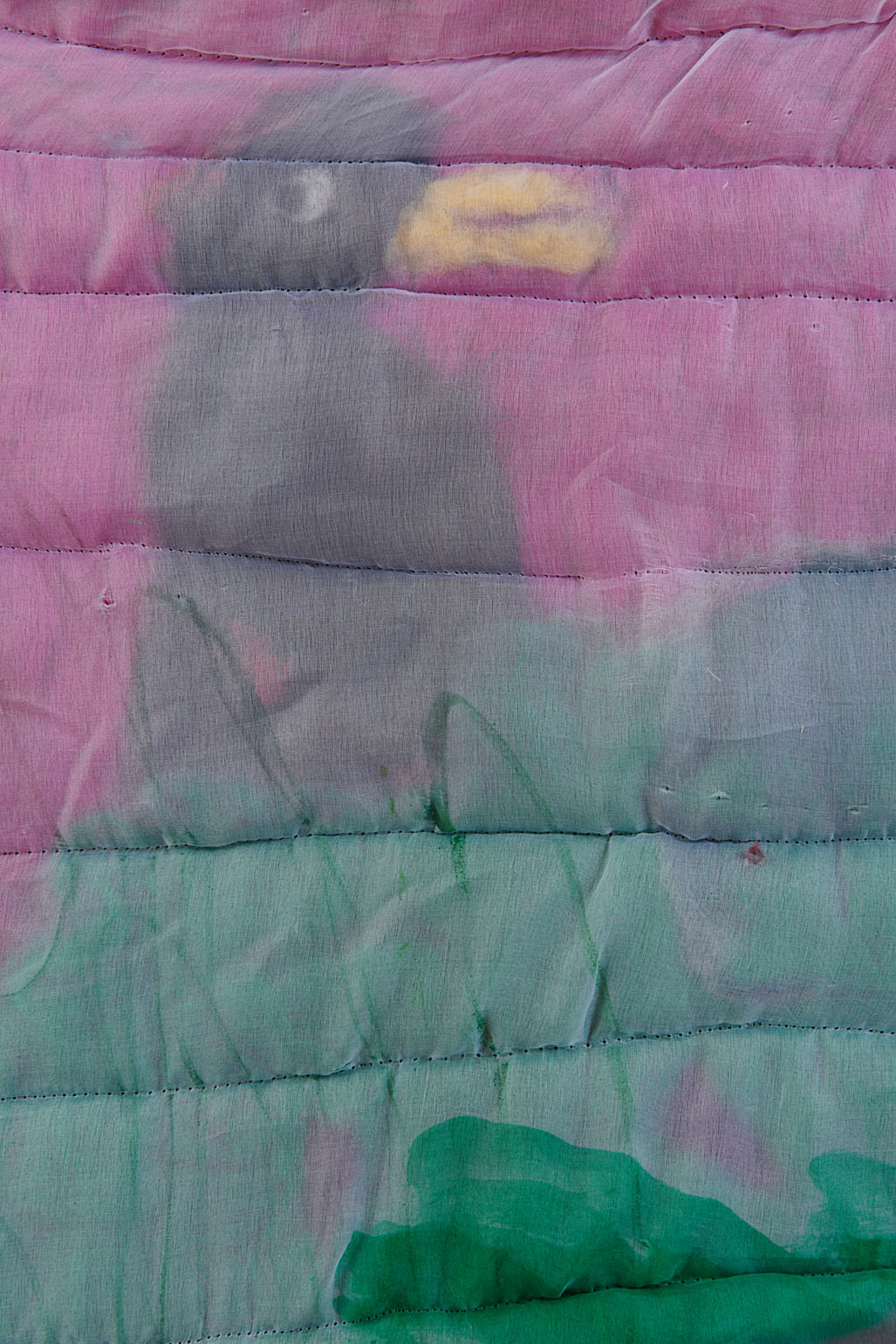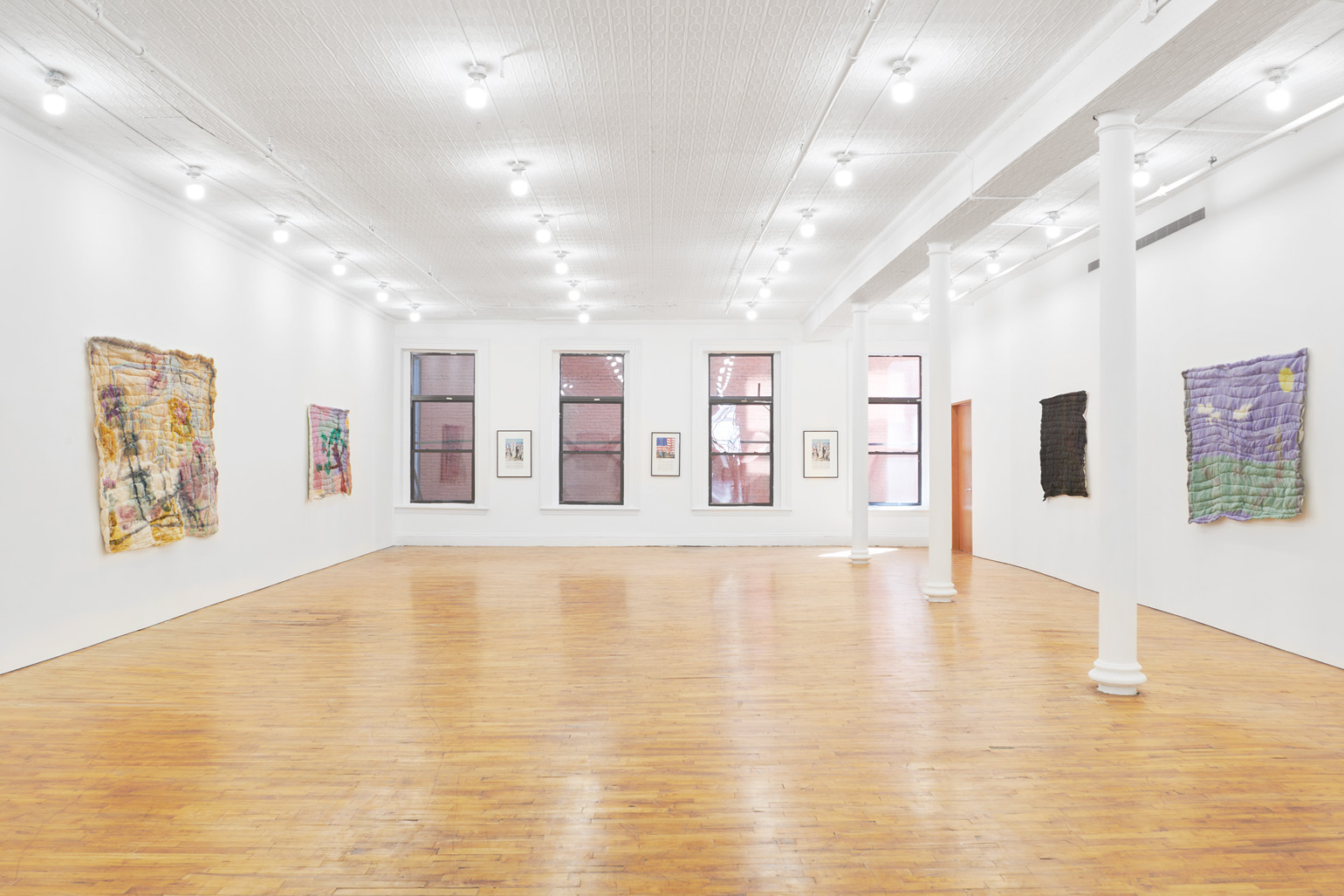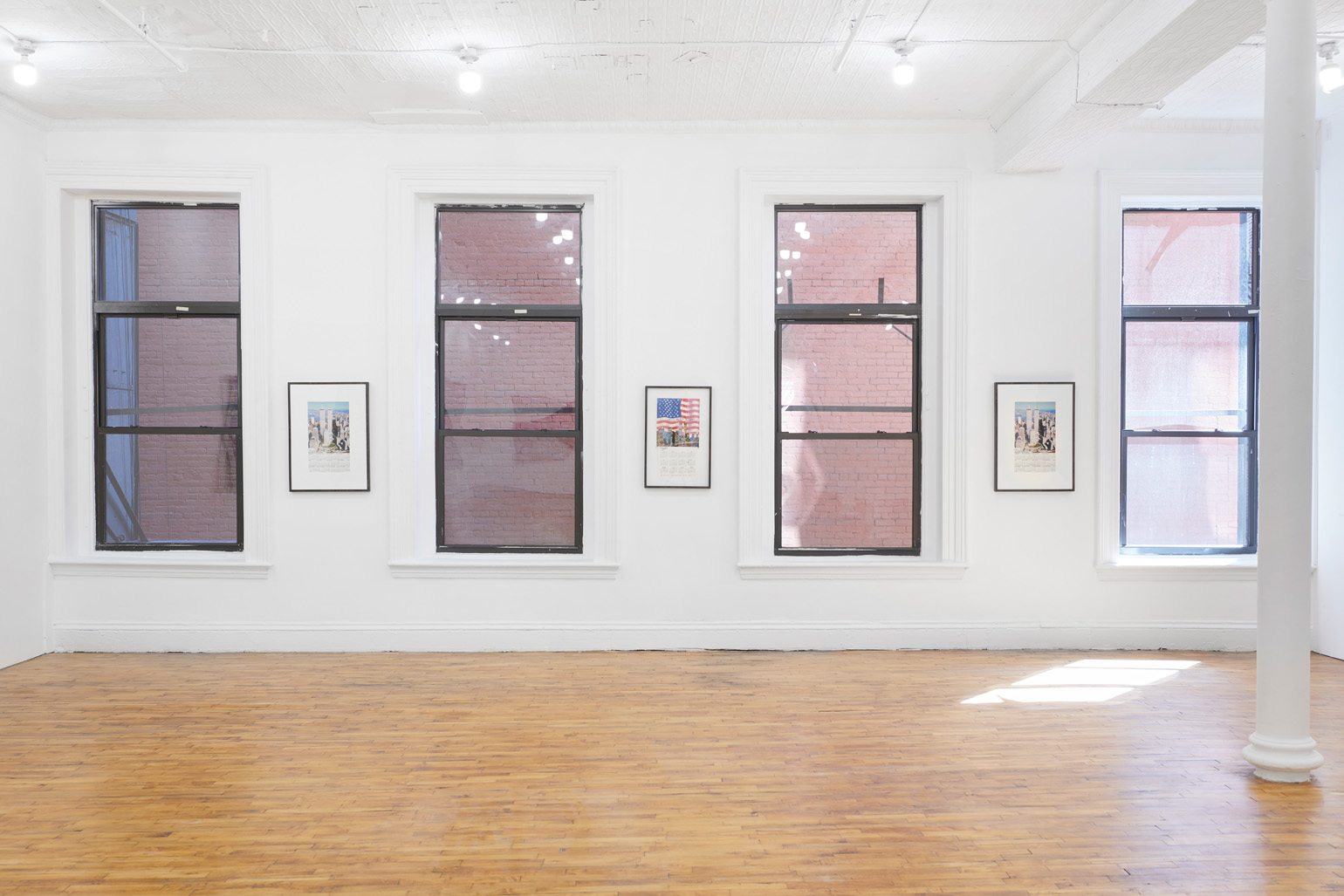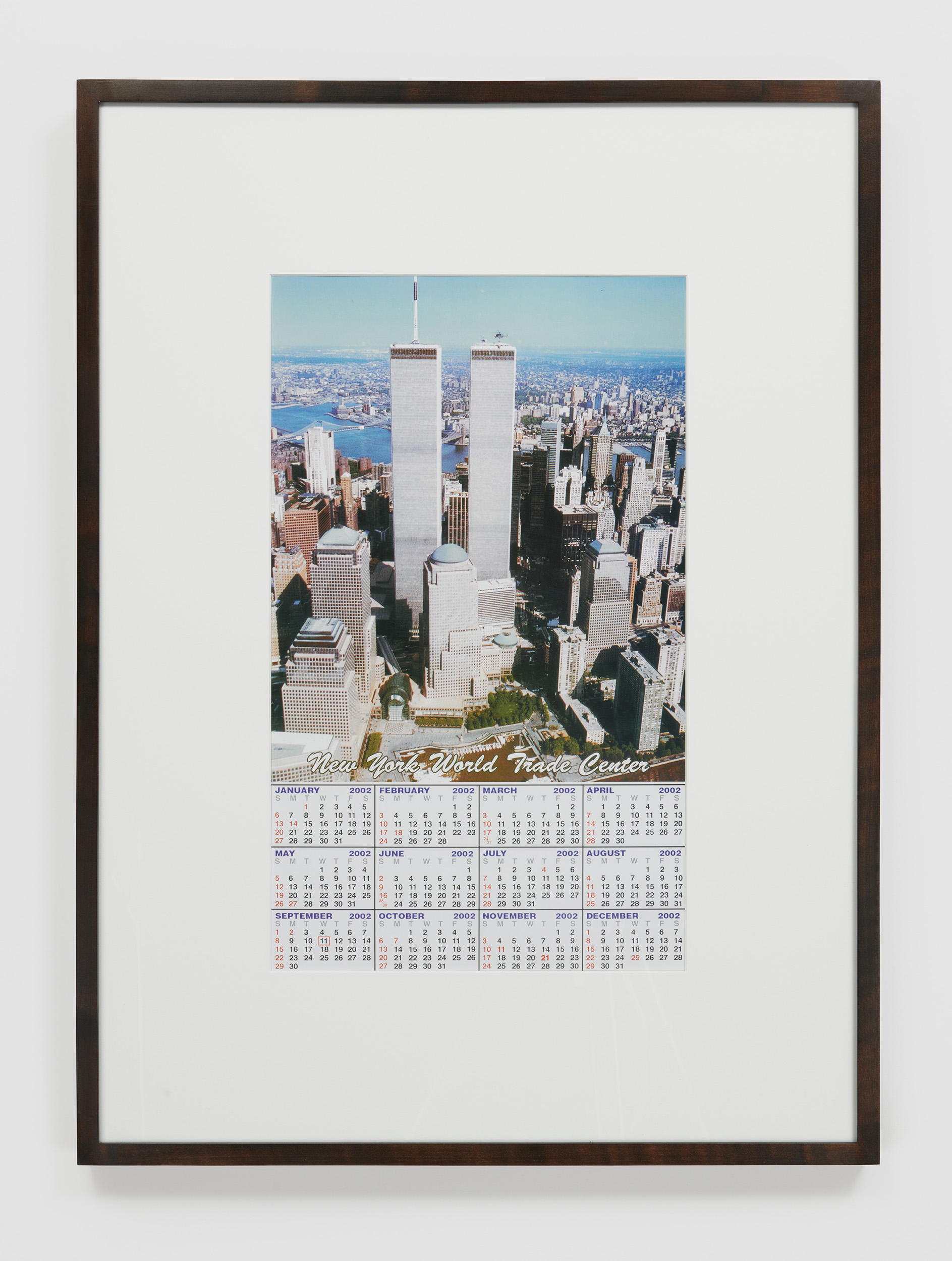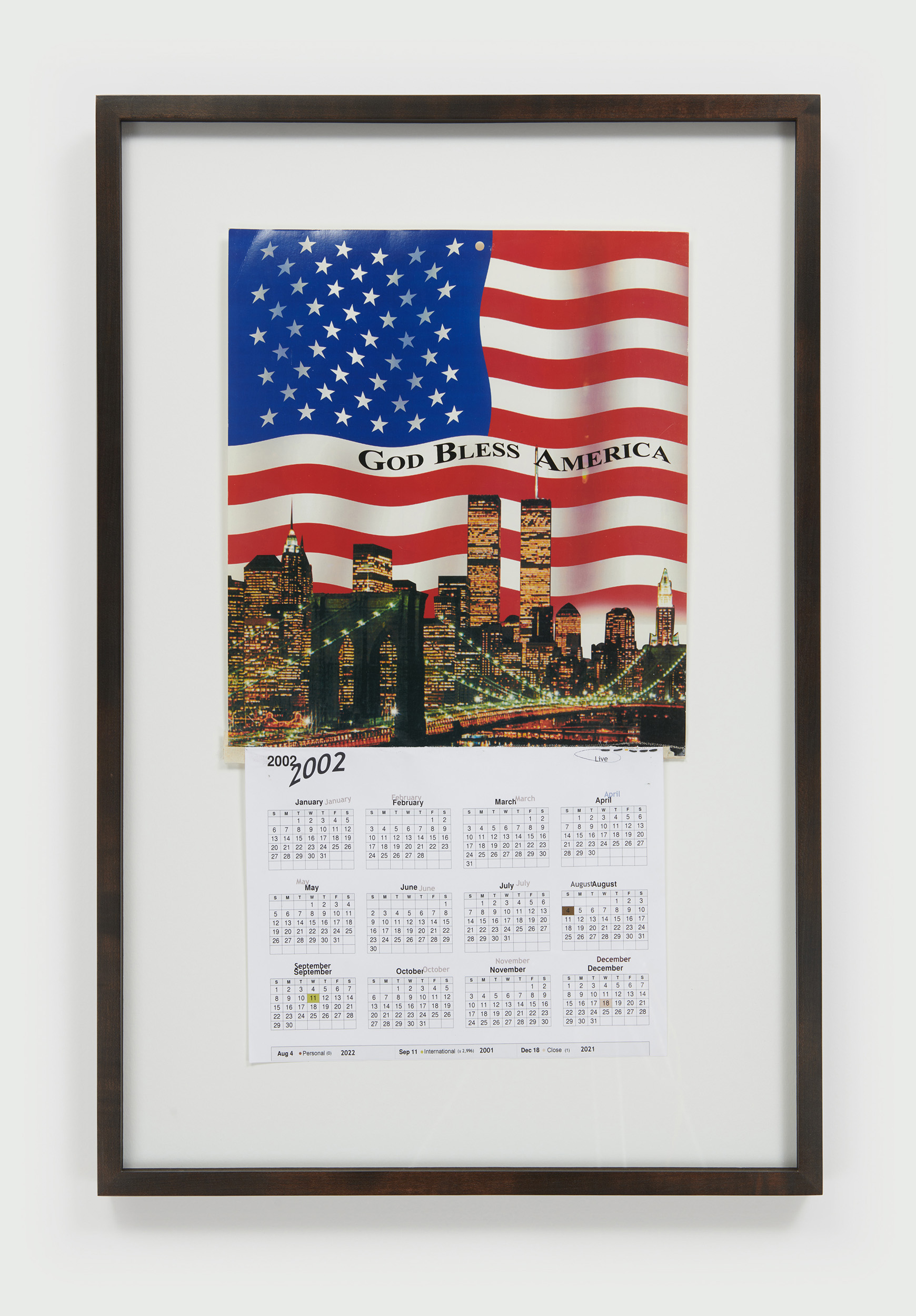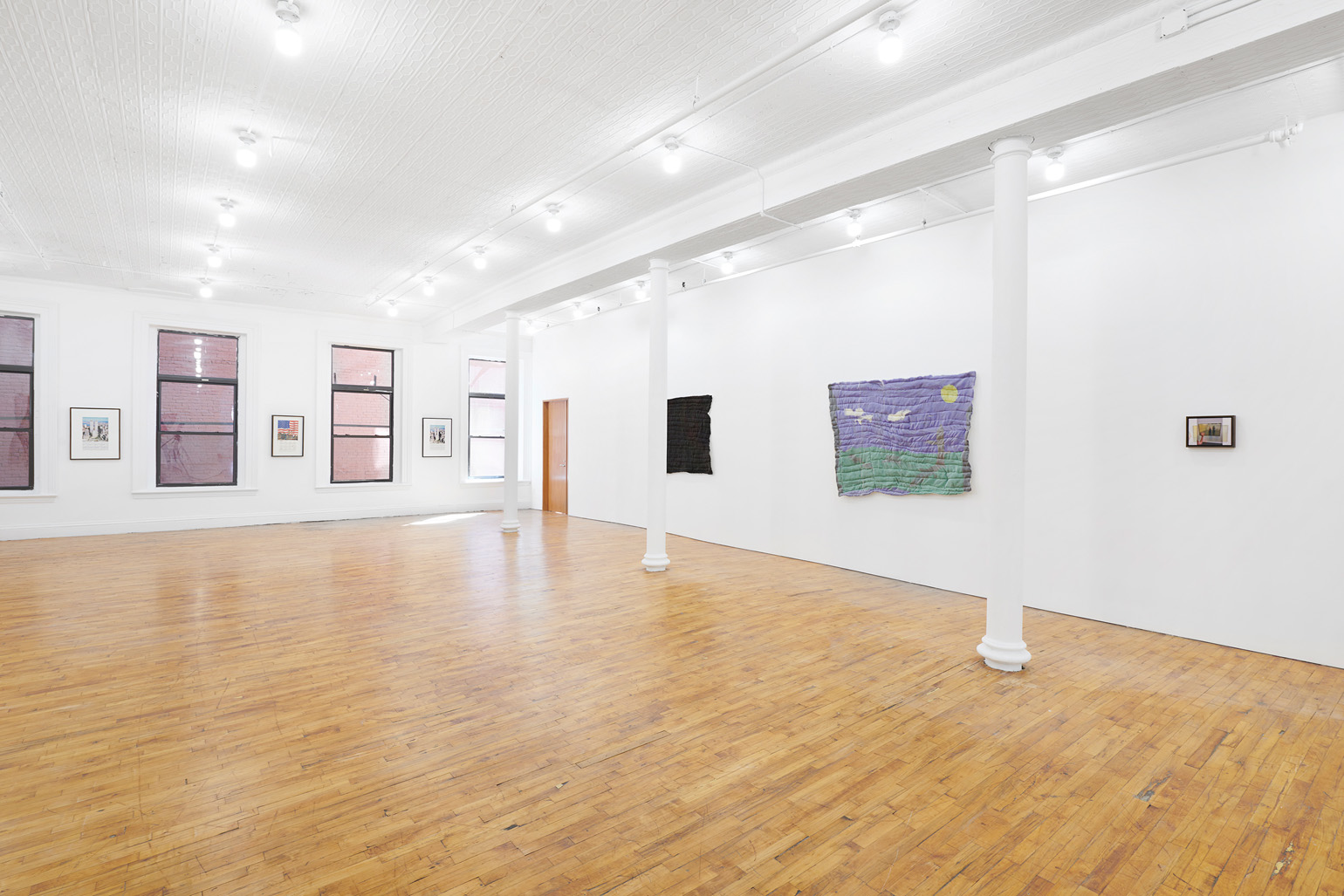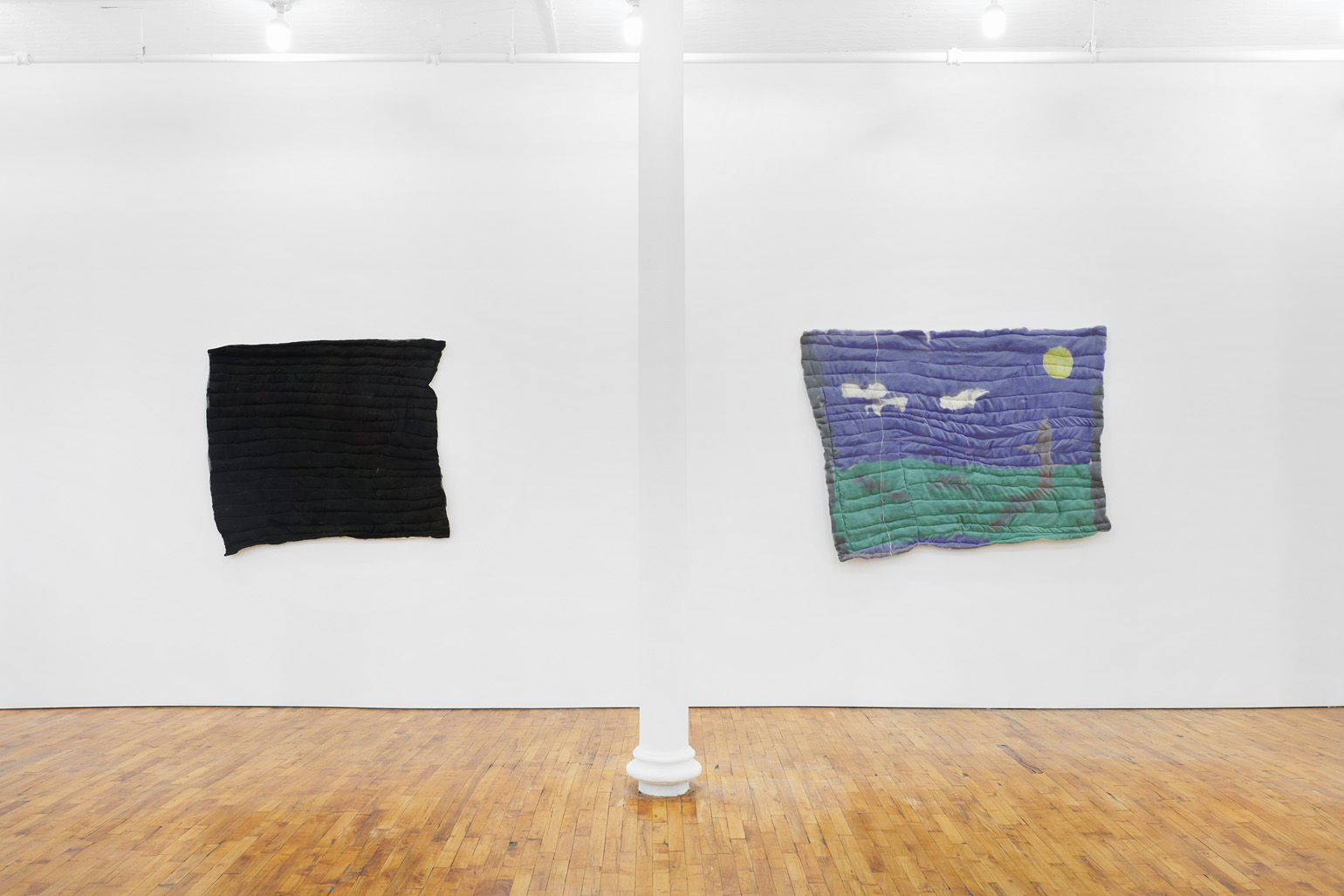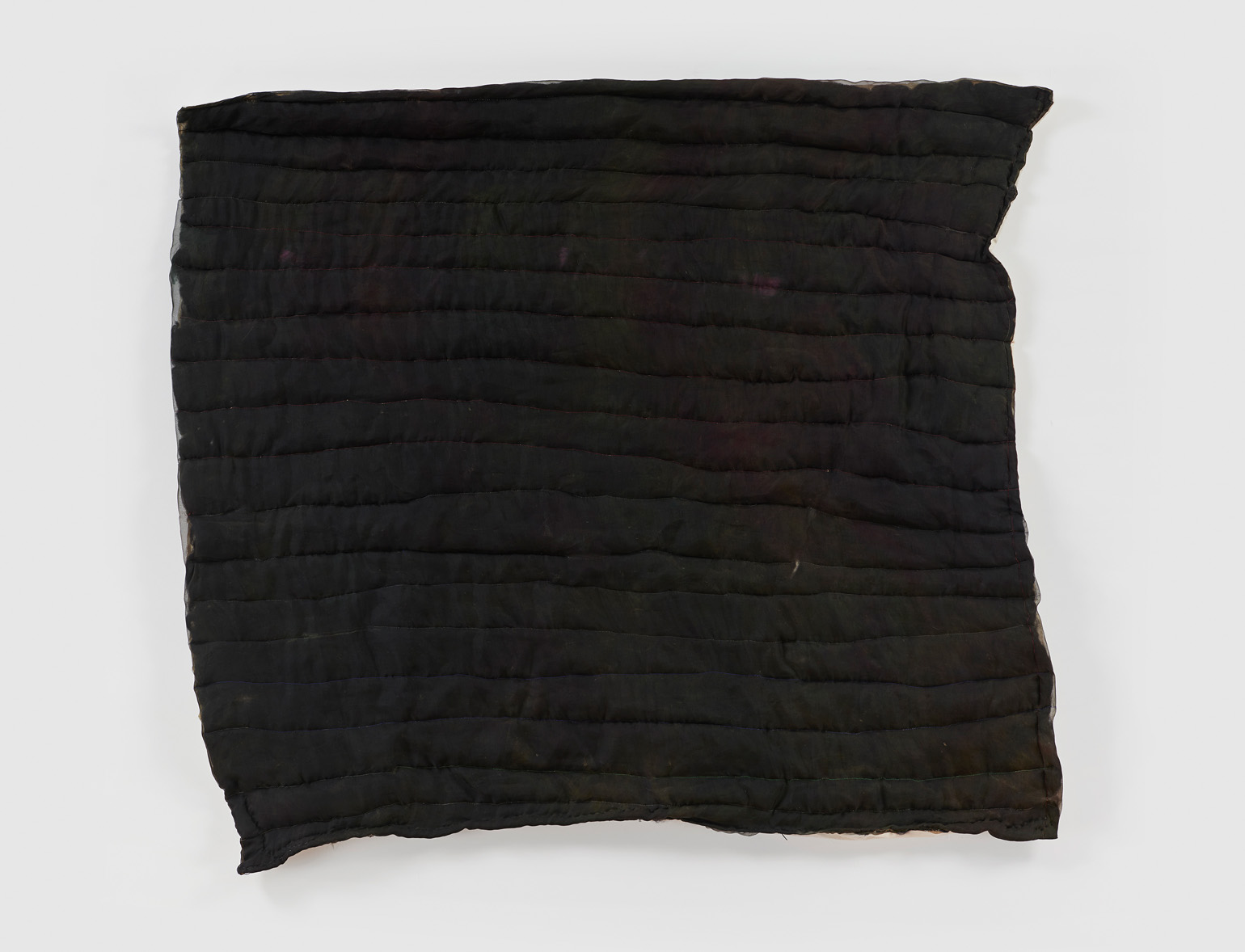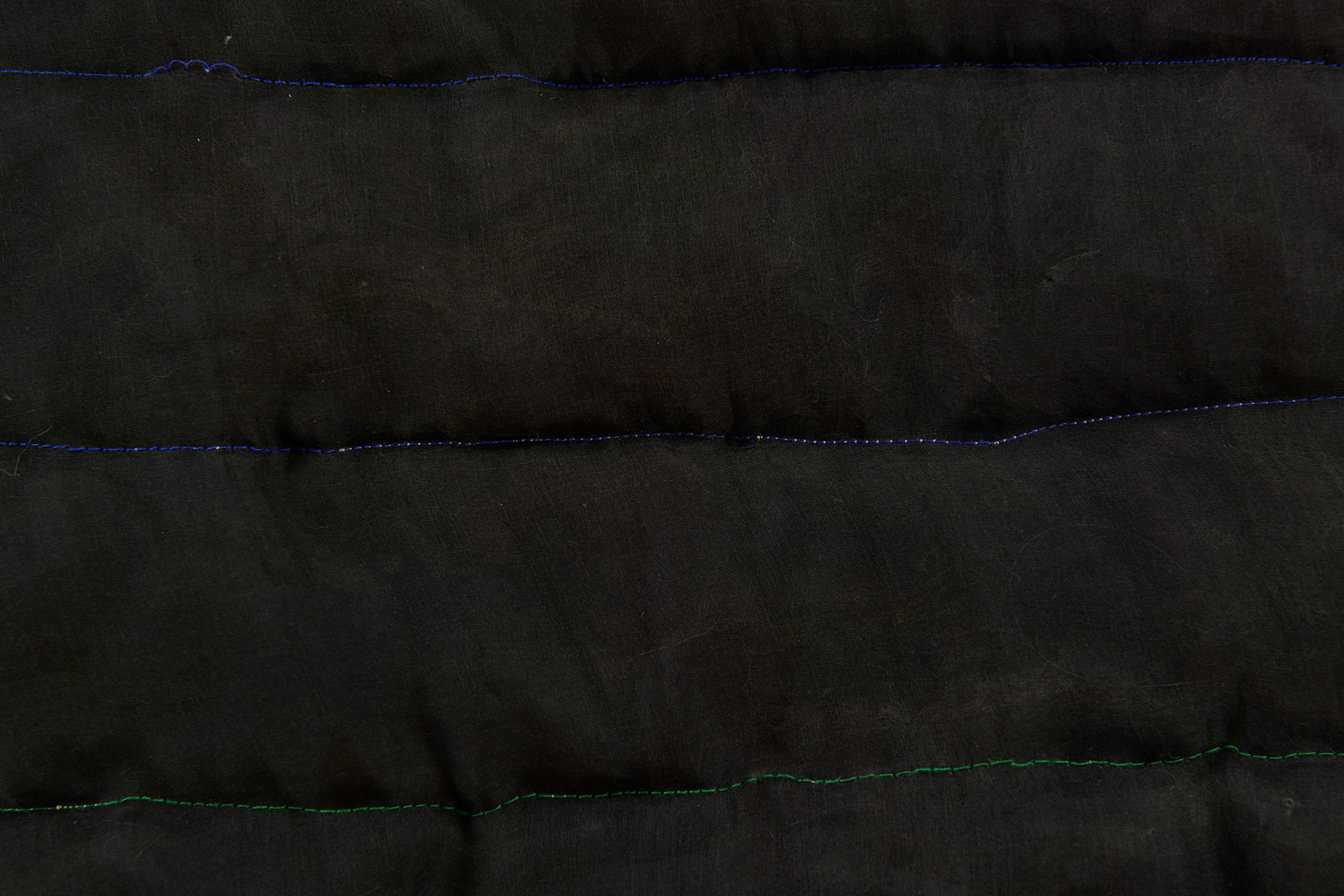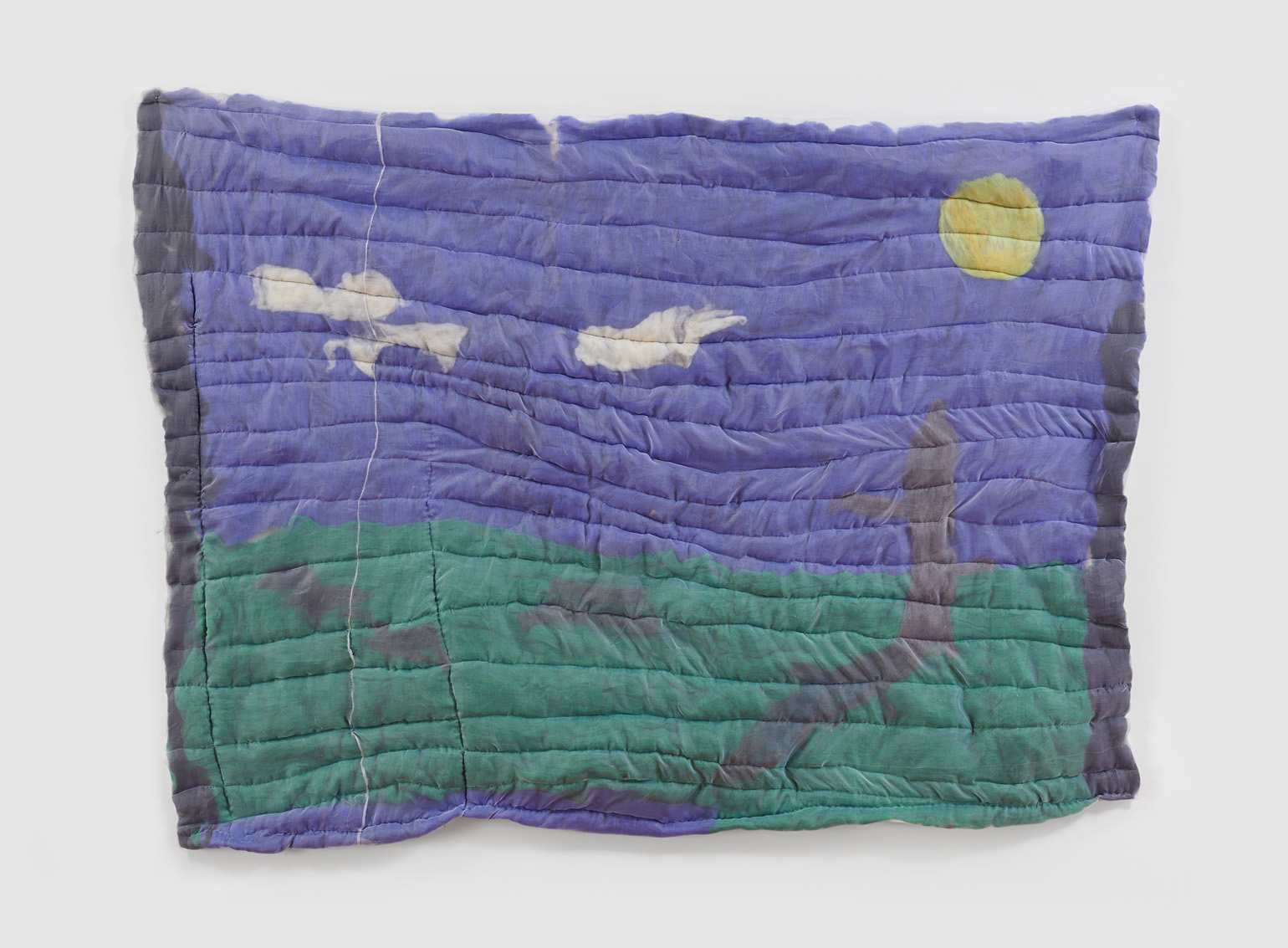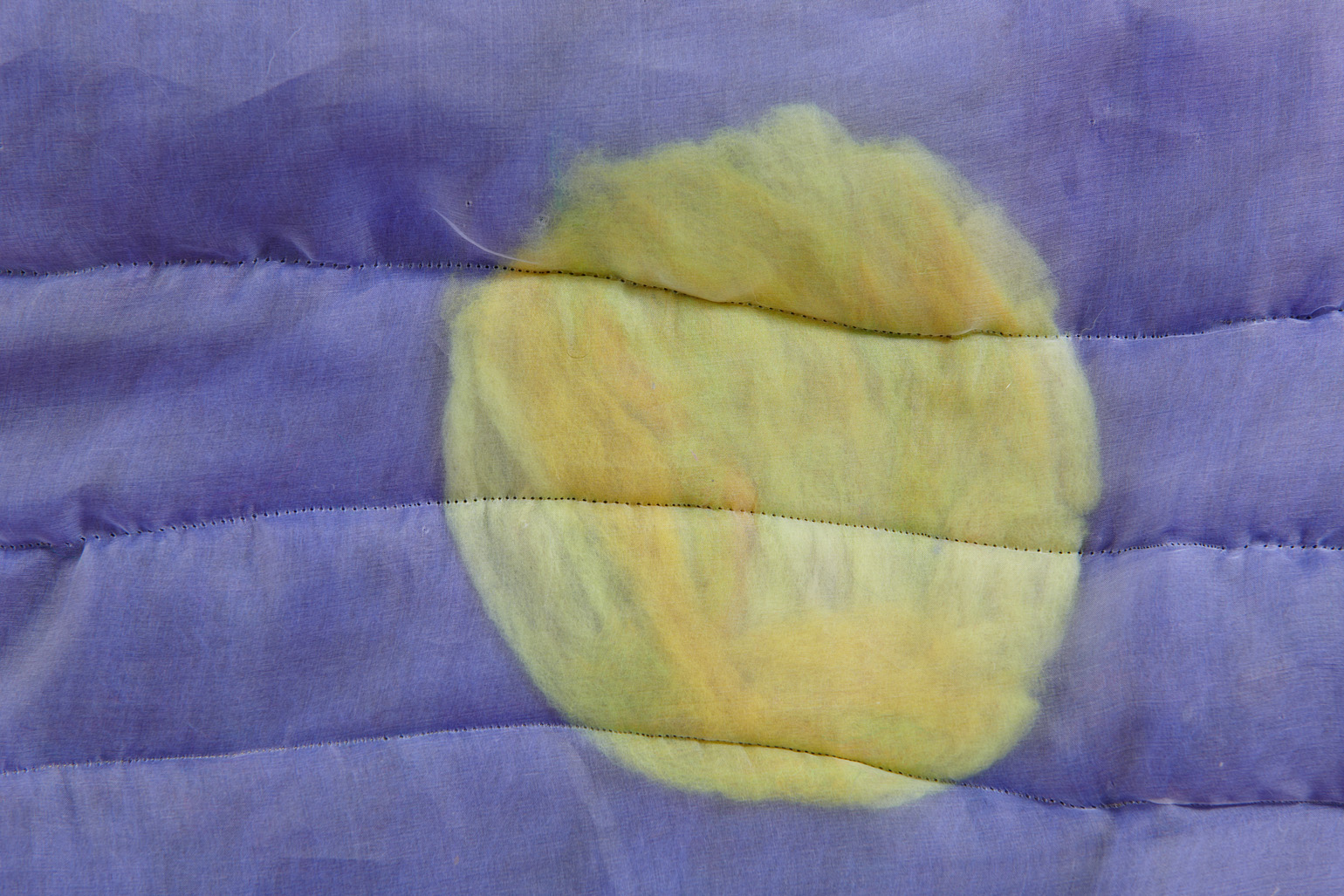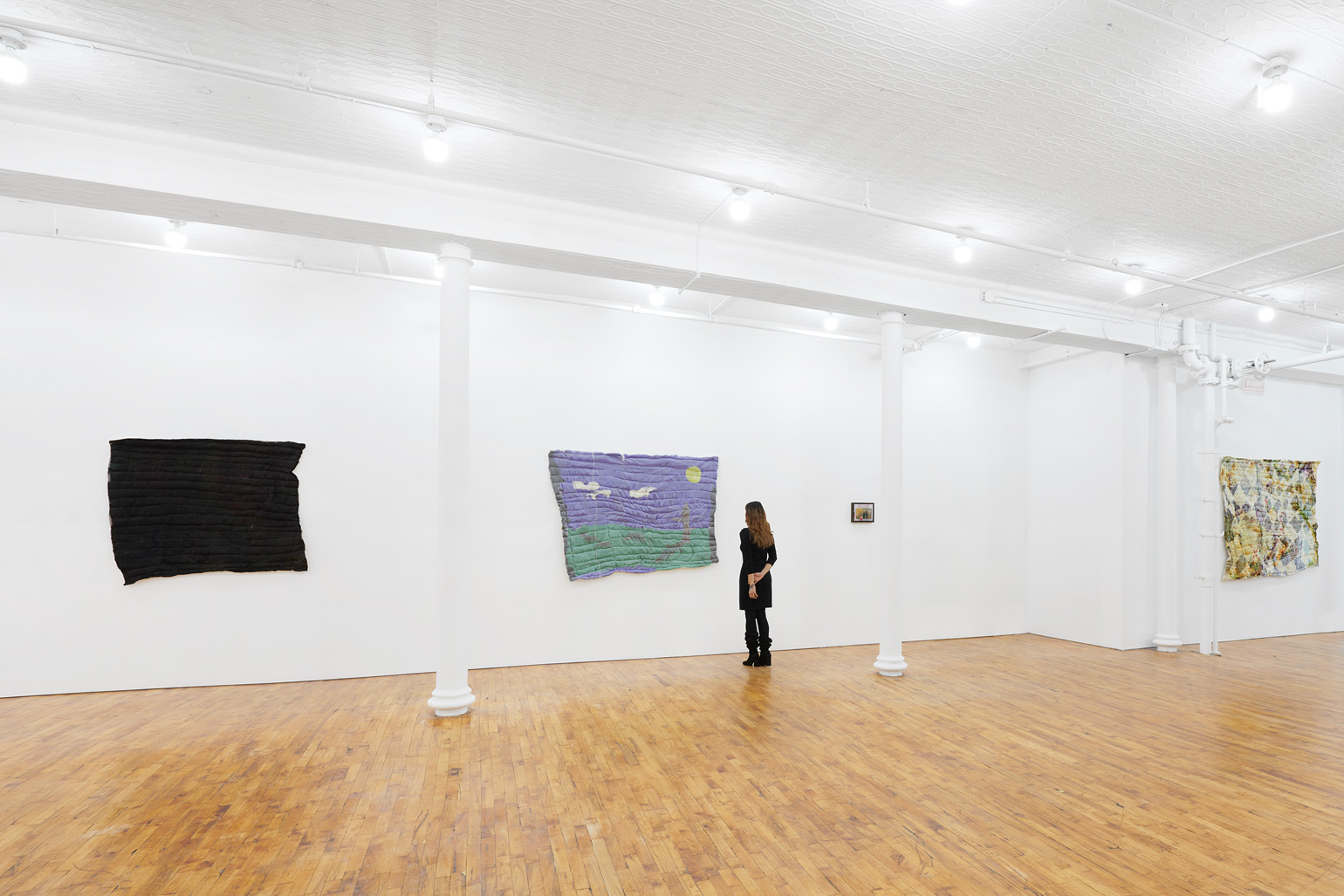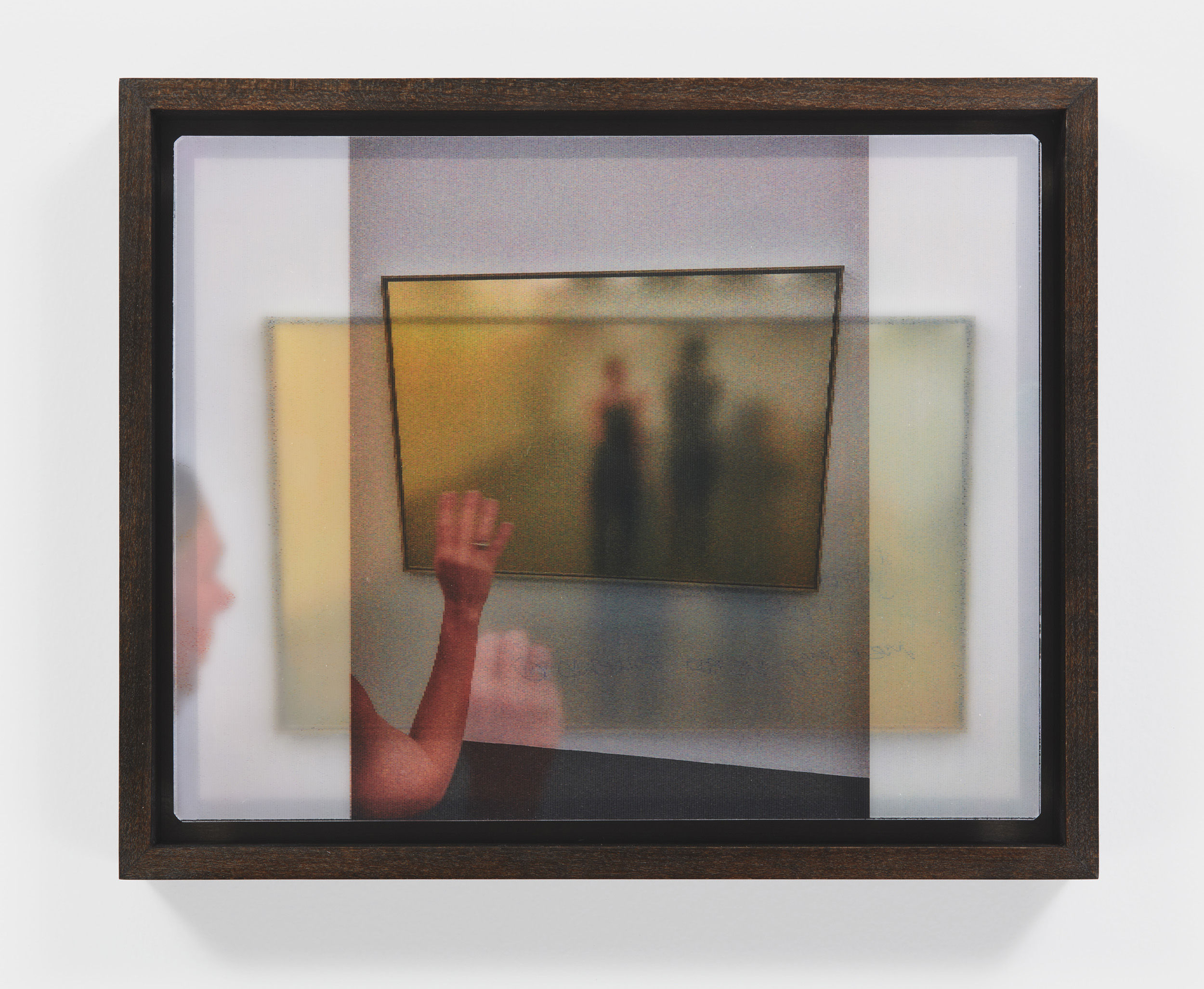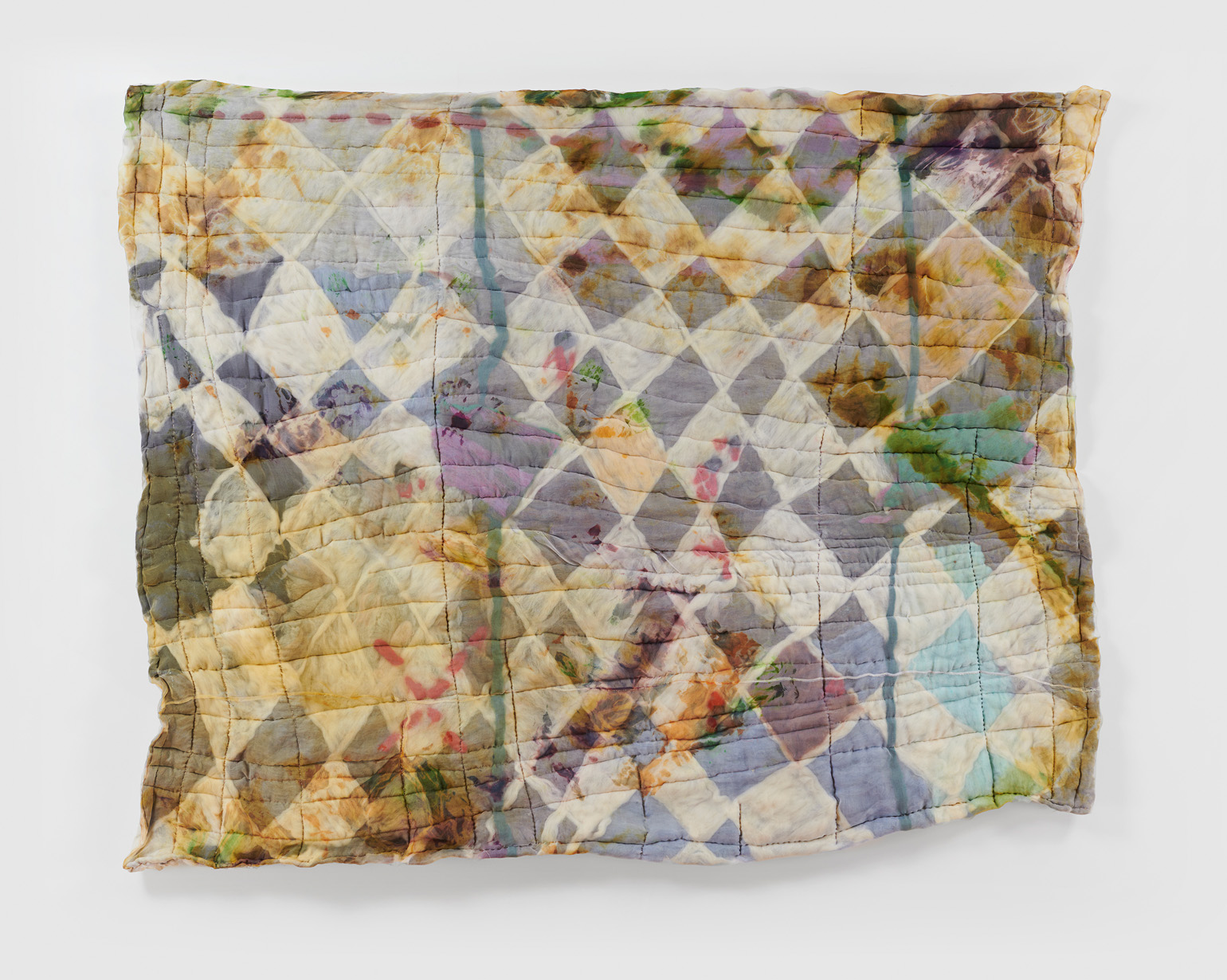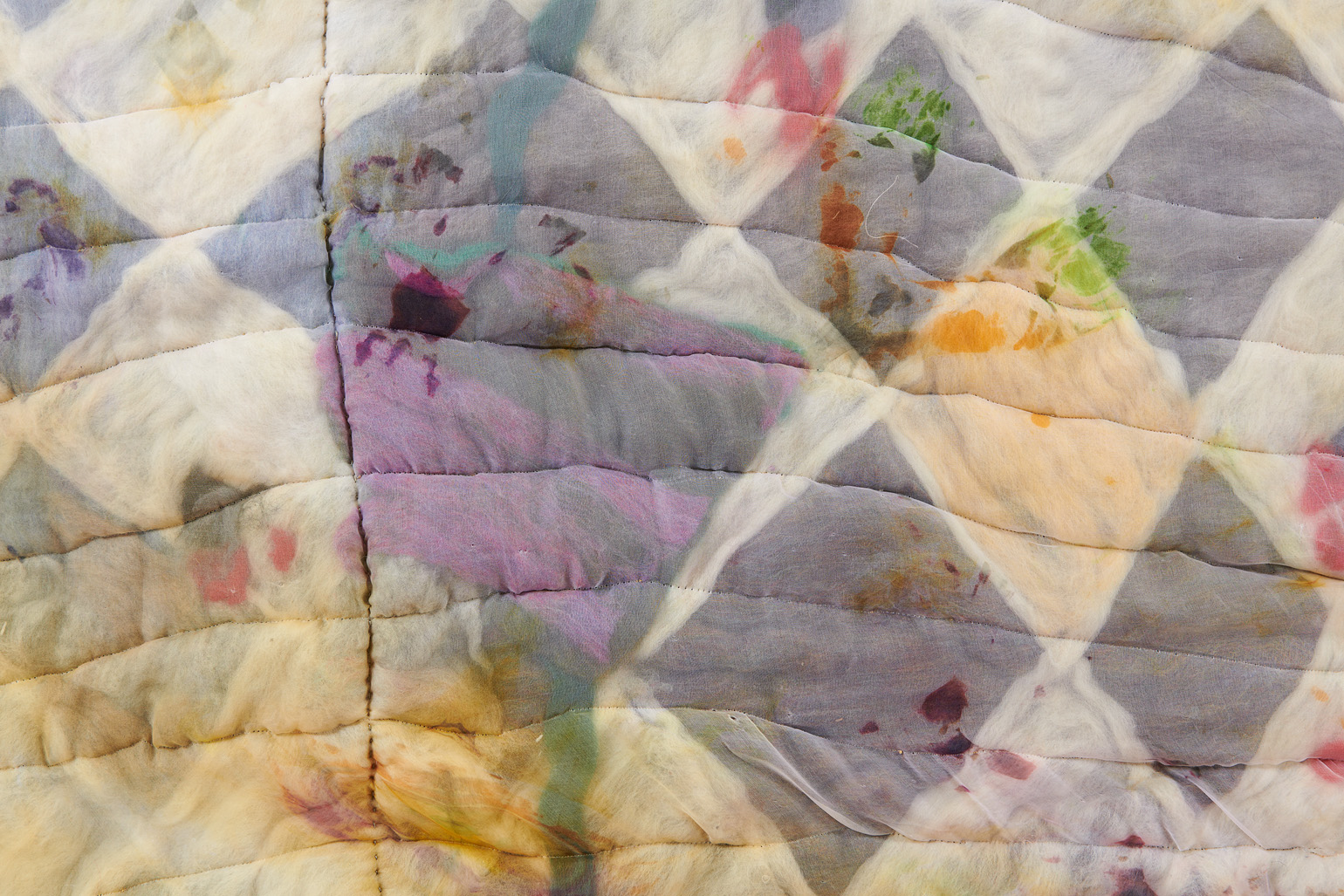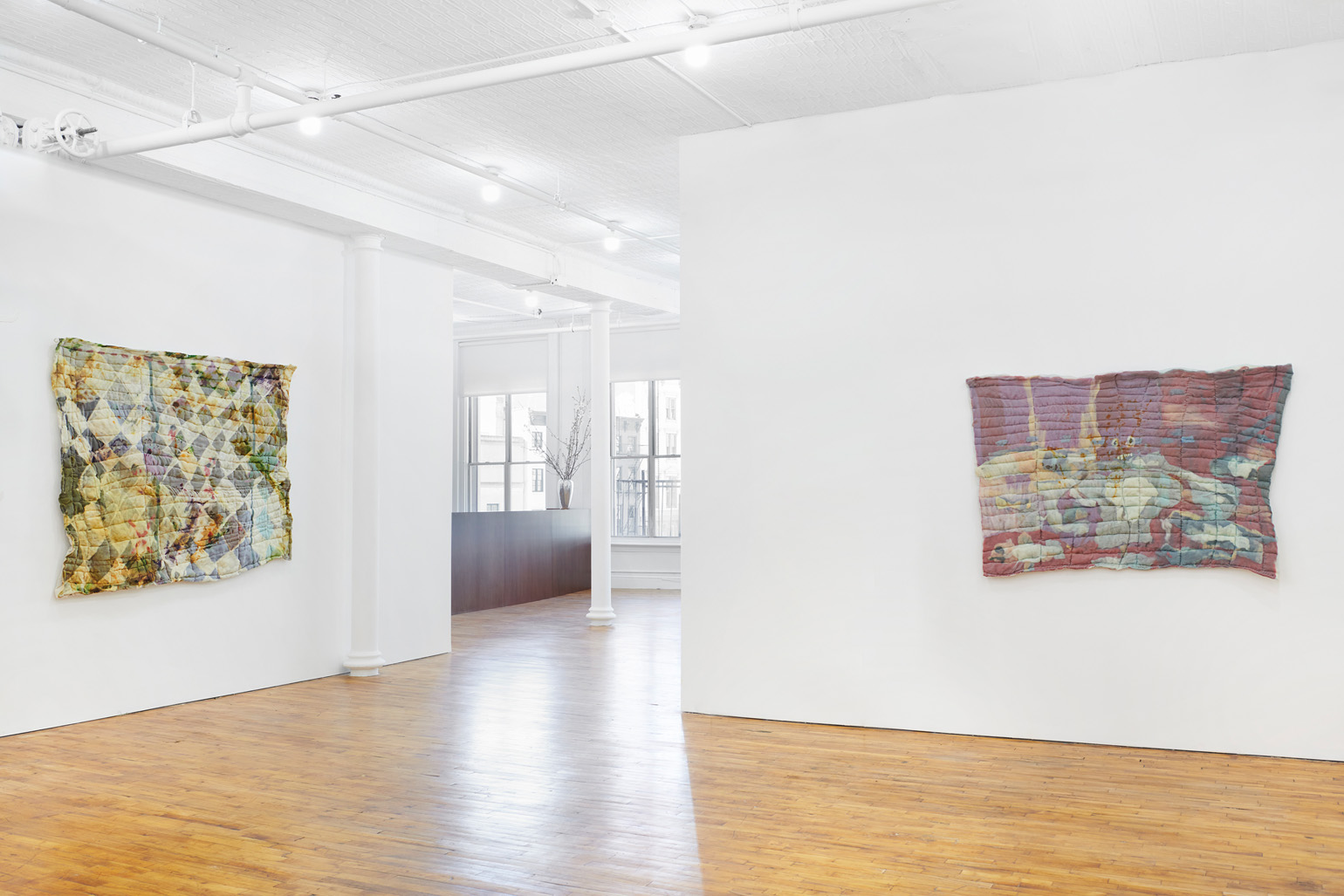The green screen is an object manufactured to disappear. When deployed in Hollywood productions, it dissolves into computer-generated abundance. Justin Chance’s Green Screen, 2023, a hand-dyed quilt in a shade of chroma-key green, playfully refuses this erasure, calling attention to the green screen as both object and subject. Honoring its namesake as more than a mere site of projection, Chance’s version of the green screen sees it transformed into an arresting and highly personal artifact. Its surface bears the intimate marks of its maker: the fabric is flecked and mottled, soft and supple, it falls in loose unscripted motions, no longer just a handmaiden of digital storytelling but the protagonist of its own fluid narrative.
In the 1970s, the pioneering feminist artist and technologist Beryl Korot argued that the Jacquard loom was the oldest form of computer, writing the history of textile-making into that of modern informatics. Anchoring Chance’s first solo presentation at Tara Downs, and his solo first exhibition in New York, Green Screen pays homage to the material networks that sustain contemporary image-making, to the presence of the real amid the simulated. Chance’s work points to the enduring relevance of cloth as a mode of communication, an archive of knowledge, a system of information processing, and a radical aesthetic object.
To create each quilt, Chance uses both wet and needle felting techniques. Raw tufts of wool are soaped, bathed, stretched, poked, and compressed until the fibers cohere and flatten into manipulable felt. Chance then hand-colors, arranges, collages, and sews these fragments into larger compositions. As a final step, he encases the wool in a layer of silk organza — a gesture of protection akin to cradling the ensemble in resin or varnish, as well as one of occlusion, further burying the layers and hours accumulated within each piece.
The title of the show, “Live,” evokes both instantaneity and longevity: the fleeting live event, a mandate, or an aspirational refrain. The quilts probe these meanings by instantiating ephemeral thoughts, moods, and pictures in durable wool containers. Displaying what looks to be a palm tree bending in the wind, Depression (2022) offers a tongue-in-cheek meditation on individual melancholy routed through the iconography of storm watching, a change in climate becoming a metaphor of individual tumult. In Endgame (2023), squares reminiscent of Tetris blocks fall from the sky, as men careen around a circle of rods and spokes reminiscent of a Ferris wheel, alluding to the pleasures and risks of game-playing both literal and metaphorical.
Shown alongside the quilts are a series of found calendars from 2002 that were produced to honor and commemorate 9/11. Their pages plot the days and months of the new year beneath high-resolution photographs of the intact Twin Towers. The film theorist Thomas Elsasser describes Hollywood productions as the “fakes we love to make authentic.” Chance embraces this idea, locating authentic feelings in these images.
